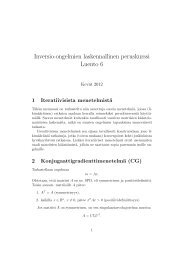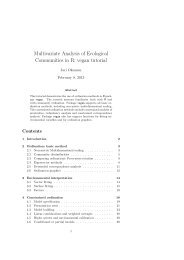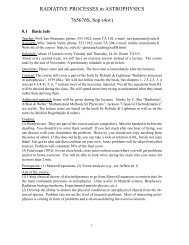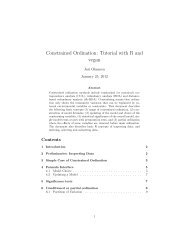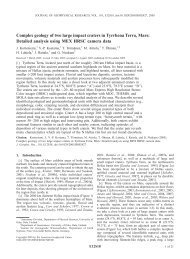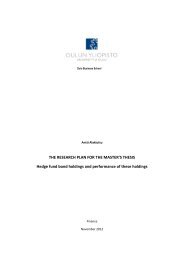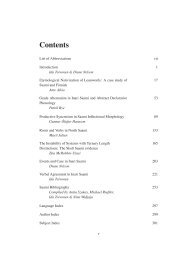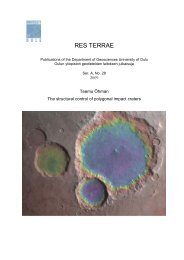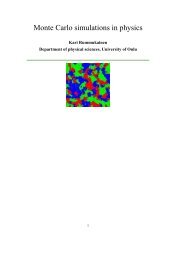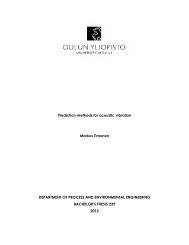Juha Köykkä - Oulu
Juha Köykkä - Oulu
Juha Köykkä - Oulu
- TAGS
- juha
- oulu
- cc.oulu.fi
Create successful ePaper yourself
Turn your PDF publications into a flip-book with our unique Google optimized e-Paper software.
Res Terrae, Ser. A 32, J. <strong>Köykkä</strong>, Sedimentology of the Mesoproterozoic Telemark basin-fills, South Norway: implications for<br />
sedimentation processes, depositional environments and tectonic evolution<br />
dia and Laurentia. The exceptions are a peak at ca. 1730 Ma and a gap of ages between<br />
1600 and 1500 Ma in the samples, which are discussed in more detail in Paper IV. If<br />
the Telemark block was not attached to the Baltica before the Sveconorwegian Oroge-<br />
ny, the thrusting of the Bamble and Kongsberg blocks onto Telemark block at ca. 1.10<br />
Ga sets a minimum age for the docking of the Telemark to Baltica (Bingen et al., 2005;<br />
Bogdanova et al., 2008).<br />
6.2.1 Rjukan Rift Basin<br />
On a more regional and local scale, the term “Rjukan Rift Basin,” for the Vestfjorddalen<br />
Supergroup, was introduced by Sigmond et al. (1997). Sigmond et al. (1997) argued that<br />
the field relations between the large volumes of felsic volcanic rocks within fault bounda-<br />
ries indicate deposition in a rift basin. A rift basin origin had already been suggested based<br />
on geochemical grounds (Menuge and Brewer, 1996). This concept has been supported by<br />
further geochemical and sedimentological studies presented by Brewer and Menuge (1998)<br />
and by Papers I, II, and IV. Structurally, the Rjukan Rift Basin is mostly oriented N-S. It is<br />
about 200-km-long and 60-km-wide, and it records a sedimentation history of ca. 170 Ma.<br />
Continental rift basins are complex features defined by large-scale structural compo-<br />
nents (e.g., border-faults, uplifted flanks, transfer zones) and by small-scale fault struc-<br />
tures within the basin. Such structures must have affected the depositional patterns of<br />
the Rjukan Rift Basin by creating local sites of uplift and erosion, which controlled the<br />
sediment transport and defined the accommodation space for deposition. A summariz-<br />
ing schematic figure of the Rjukan Rift Basin and the overlying succession’s structur-<br />
al-sedimentological evolution is presented in Figure 10. The syn-rift stage was charac-<br />
terized by abundant bimodal volcanism followed by abundant continental flood basalts<br />
and coarse-grained alluvial fan-fluvial sedimentation in different parts of the basin,<br />
which was defined by pure extensional rifting (studied in Papers I and II). Crustal ex-<br />
tension and rifting in the Telemark was related to the mantle plume event or Dalopolo-<br />
nian Orogeny, which possible related to collision between the Mesoproterozoic EEC<br />
and another continent, presumably Amazonia or some other South American terranes<br />
(Bogdanova, 2001). The sedimentation of the basin was mostly affected by the local<br />
intensive erosion and weathering of the felsic lavas. The sediment deposits suggest<br />
high subsidence rates for the basin and an equally rapid erosion of rising rift shoulders<br />
65



